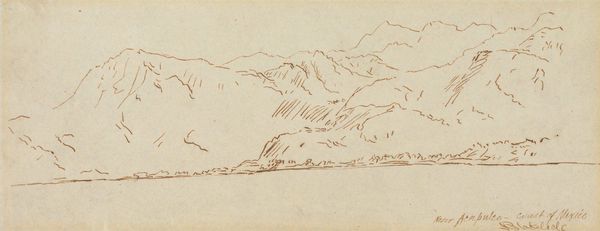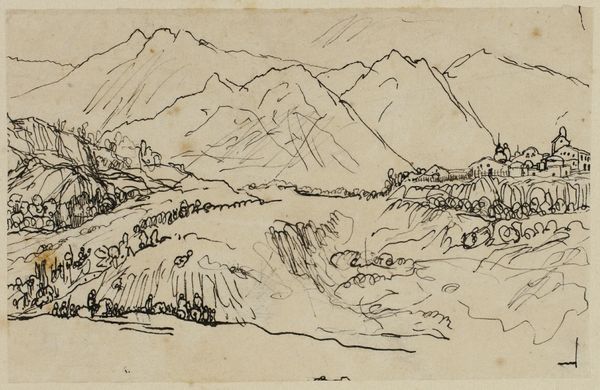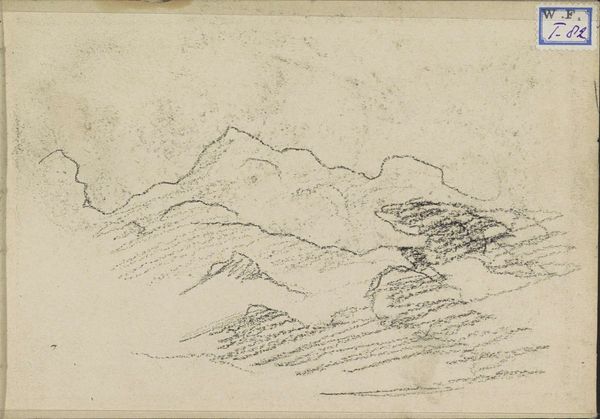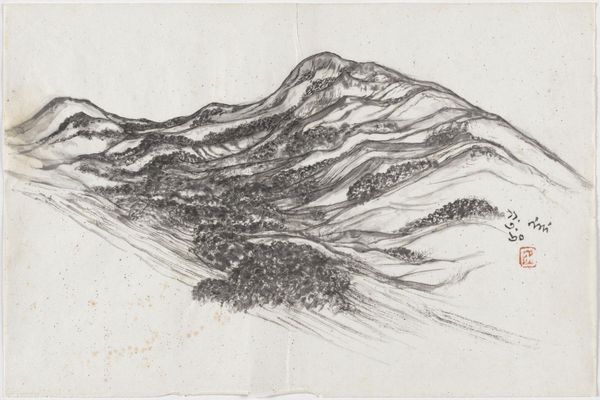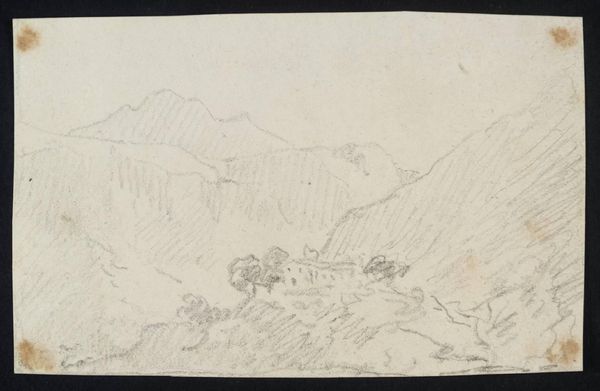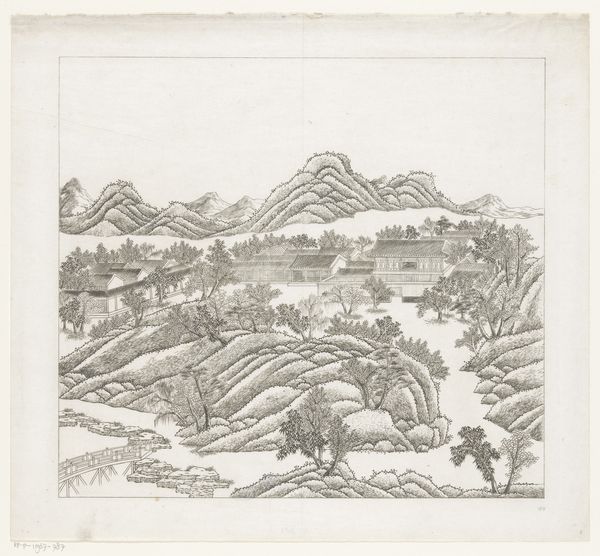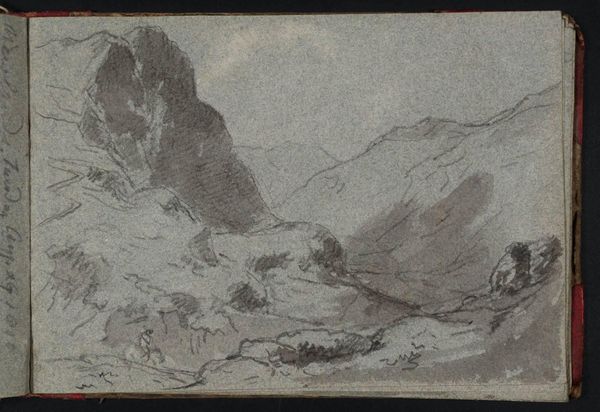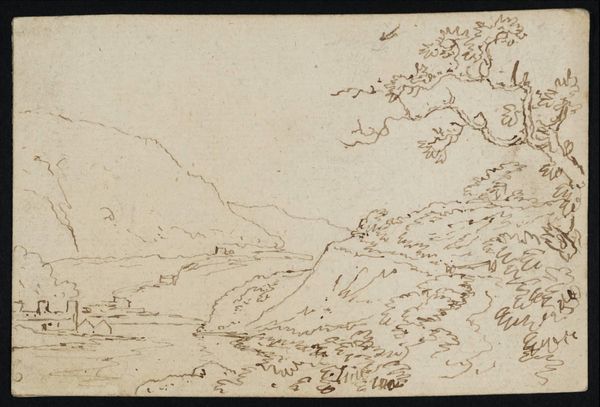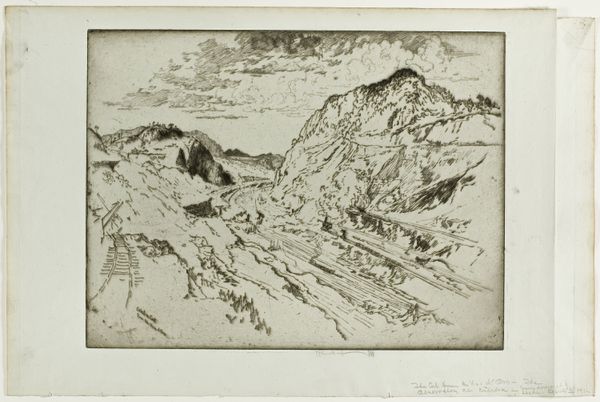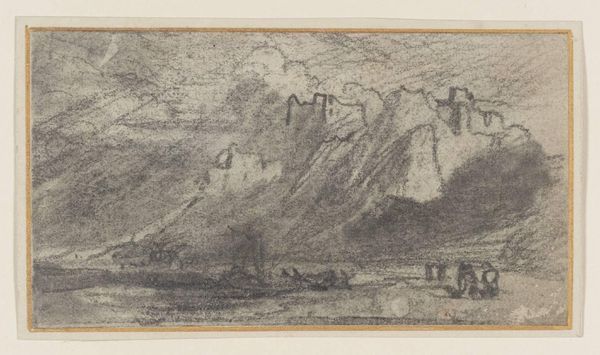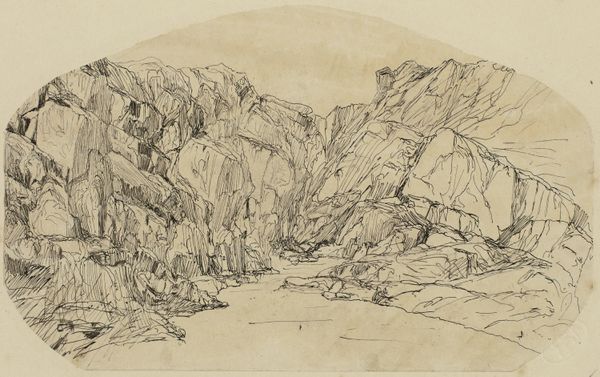
drawing, ink
#
drawing
#
asian-art
#
landscape
#
charcoal drawing
#
ink
#
orientalism
Dimensions: 10 1/4 x 42 1/2 in. (26 x 108 cm)
Copyright: Public Domain
Curator: Up next, we have Bian Wenyu's "Streams and Mountains in Autumn Mist," created in 1634. It resides here at the Metropolitan Museum of Art, a masterful ink drawing on paper. Editor: It’s really serene, isn't it? Sort of melancholic in a beautiful way. The muted tones make me feel like I'm watching the world through a veil. Curator: Landscape painting during the late Ming dynasty became a vessel for literati artists to express personal emotions amid political upheaval, a rejection of the court style. This piece, in particular, resonates with the artist's inner world. Editor: I feel that melancholy deeply. There’s a certain loneliness to the wispy trees and distant mountains that hits hard. Does knowing the political context heighten that emotion or does it provide kind of a story? Curator: Both, really. Understanding the societal unrest provides a frame for understanding why Bian Wenyu, and artists like him, chose nature as their refuge and their mode of expressing dissatisfaction. Art became their social statement. Editor: So the mist isn't just mist; it’s symbolic! I mean, of course. It’s kind of beautiful how artists can take real world and use them in artworks for symbolic intention. Like what’s being hidden versus what's revealed, you know? It almost turns into a form of storytelling! Curator: Exactly! The blurring effect of the ink washes diminishes solid form which then opens the interpretation beyond surface appearance. It asks the viewer to feel the state, rather than merely observe a scenery. Editor: I will forever see misty landscapes differently now! The personal feelings combined with cultural history and society impact makes everything so much more meaningful now. Curator: That is why we tell stories in the art! This artwork is more than meets the eye if the viewer allows their senses and history to merge.
Comments
No comments
Be the first to comment and join the conversation on the ultimate creative platform.

